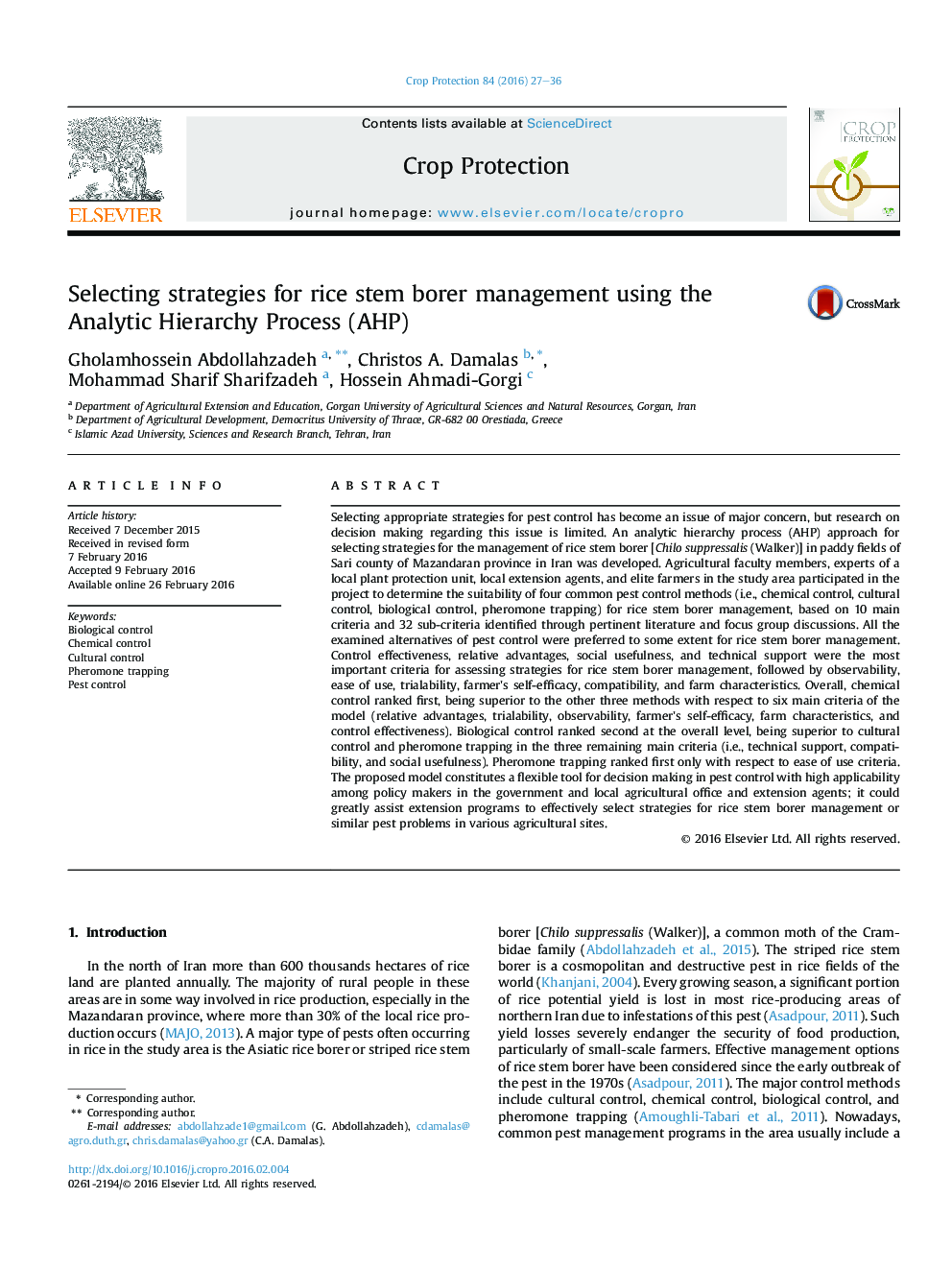| Article ID | Journal | Published Year | Pages | File Type |
|---|---|---|---|---|
| 6373217 | Crop Protection | 2016 | 10 Pages |
â¢Control methods for Chilo suppressalis were evaluated with analytic hierarchy.â¢Ten main criteria and thirty-two sub-criteria were used for creating an hierarchy.â¢Chemical control ranked first concerning six main criteria of the model.â¢Biological control ranked second concerning the three remaining main criteria.â¢Pheromone trapping ranked first only with respect to ease of use criteria.
Selecting appropriate strategies for pest control has become an issue of major concern, but research on decision making regarding this issue is limited. An analytic hierarchy process (AHP) approach for selecting strategies for the management of rice stem borer [Chilo suppressalis (Walker)] in paddy fields of Sari county of Mazandaran province in Iran was developed. Agricultural faculty members, experts of a local plant protection unit, local extension agents, and elite farmers in the study area participated in the project to determine the suitability of four common pest control methods (i.e., chemical control, cultural control, biological control, pheromone trapping) for rice stem borer management, based on 10 main criteria and 32 sub-criteria identified through pertinent literature and focus group discussions. All the examined alternatives of pest control were preferred to some extent for rice stem borer management. Control effectiveness, relative advantages, social usefulness, and technical support were the most important criteria for assessing strategies for rice stem borer management, followed by observability, ease of use, trialability, farmer's self-efficacy, compatibility, and farm characteristics. Overall, chemical control ranked first, being superior to the other three methods with respect to six main criteria of the model (relative advantages, trialability, observability, farmer's self-efficacy, farm characteristics, and control effectiveness). Biological control ranked second at the overall level, being superior to cultural control and pheromone trapping in the three remaining main criteria (i.e., technical support, compatibility, and social usefulness). Pheromone trapping ranked first only with respect to ease of use criteria. The proposed model constitutes a flexible tool for decision making in pest control with high applicability among policy makers in the government and local agricultural office and extension agents; it could greatly assist extension programs to effectively select strategies for rice stem borer management or similar pest problems in various agricultural sites.
